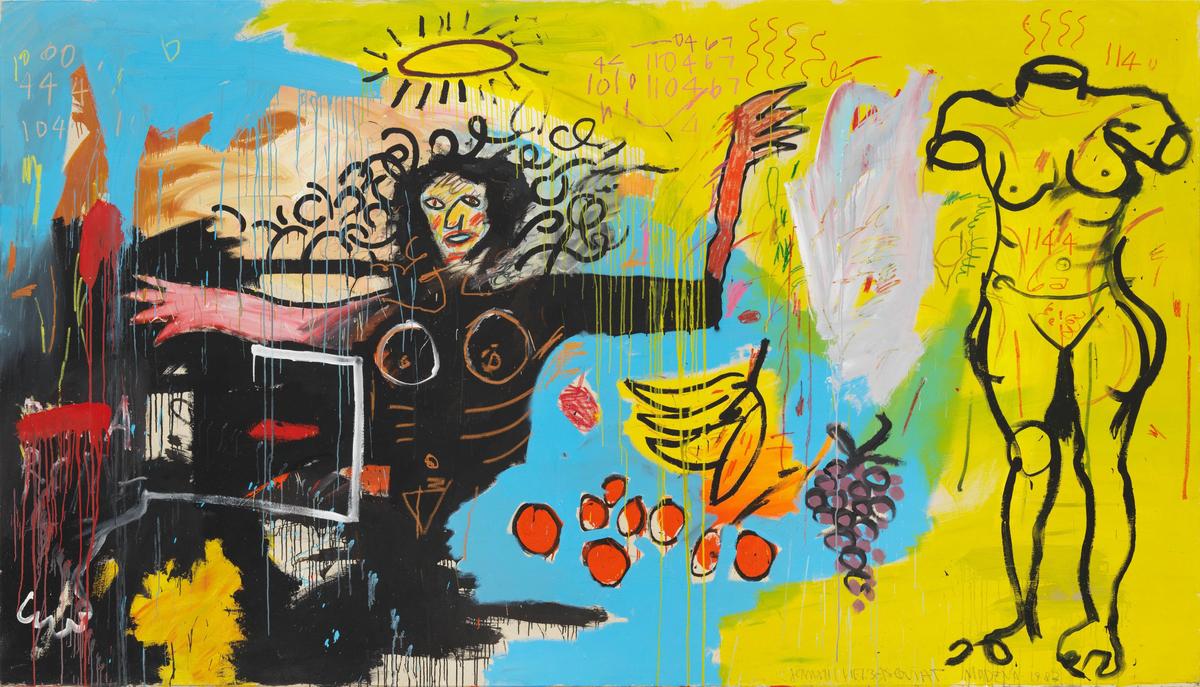In 1982, Jean-Michel Basquiat was invited to travel to Modena in northern Italy by the Italian gallerist Emilio Mazzoli to make eight works for a one-off show. By Basquiat’s own account it was a miserable experience, where he was made to work in a warehouse—“a sick factory” as he called it—provided by Mazzoli. A fallout over payment meant the show never took place but the Swiss art dealer and collector Bruno Bischofberger bought four of the paintings, including Untitled (1982).
That canvas goes on show at Gagosian Gallery in Paris next week (17 October) alongside a Roman sculpture of Venus from the Torlonia Collection in Rome, which houses one of the world’s most important collections of classical sculpture. The Torlonia Collection has rarely been shown to the public since the mid-20th century—the Musée du Louvre is currently exhibiting a group of masterpieces from the collection in its first showing outside of Italy (until 11 November).
As part of the loan agreement, Gagosian is supporting the conservation of the Roman sculpture.
The gallery declined to comment on whether Bischofberger still owns the painting and what its current value is; an exhibition of all eight Modena paintings held at the Fondation Beyeler in June 2023 was insured for $800m. In the catalogue accompanying the show, the painting’s title is given as Untitled [Woman with Roman Torso (Venus)].
Classical art was a recurring theme for Basquiat. As Larry Gagosian says: “Basquiat saw the world differently. He had a great grasp of the history of art and visual culture and was brilliant at bringing the past to life in his paintings. His work reminds us of the common chords and resonances of beauty and identity throughout art history. Seeing his painting in dialogue with this ancient Venus sculpture reminds us of the enduring energy and sophistication of his work.”
Untitled includes a Venus figure on the righthand side, a common motif for Basquiat, thought to have deep personal meaning for the artist. Right before his trip to Modena, Basquiat visited Rome with his girlfriend Suzanne Mallouk, whom the artist began calling “Venus” the very first time they met. “Venus, morning star, sweet potato, I have the silver and you have the gold,” Basquiat once said of his girlfriend.
Serena Cattaneo Adorno, a senior director at Gagosian in Paris, says, as an Italian, she “cannot avoid thinking of this particular Modena painting as being so visually rooted to Basquiat’s trip to Rome in 1982, just before heading to Modena to complete this rare series of eight paintings, it feels both pertinent and timeless to highlight this important aspect”.
Of the pairing of classical and contemporary works, Carlotta Loverini Botta, the director of Fondazione Torlonia says: “The cosmopolitan spirit that has always characterised classical art must continue to be nurtured for generations to come. It is a universal language that emerges from the continual reinvention of the classics, confronting them with modern culture and contemporary art.”


